*NURSING > STUDY GUIDE > VATI RN 2ND COMPREHENSIVE PREDICTOR FOCUSED REVIEW,Latest 2021/2022 (Download To Score An A) (All)
VATI RN 2ND COMPREHENSIVE PREDICTOR FOCUSED REVIEW,Latest 2021/2022 (Download To Score An A)
Document Content and Description Below
VATI RN 2ND COMPREHENSIVE PREDICTOR FOCUSED REVIEW Management of Care – (5) Case Management – (1) Cardiovascular Disorders: Tetralogy of Fallot (RM NCC RN 10.0 Chp 20) Defects ... that decreases pulmonary blood flow have an obstruction of pulmonary blood flow and an anatomic defect (ASD or VSD) between the right and left sides of the heart. In these defects, there is a right to left shift allowing deoxygenated blood to enter the systemic circulation. Hypercyanotic spells (blue, or “Tet,” spells) manifest as acute cyanosis and hyperpnea Tetralogy of fallot – four defects that result in mixed blood flow: Pulmonary stenosis, ventricular septal defect, overriding aorta, right ventricular hypertrophy Cyanosis at birth: progressive cyanosis over the first year of life Systolic murmur Episodes of acute cyanosis and hypoxia (blue or “Tet” spells) Surgical procedures – shunt placement until able to undergo primary repair; complete repair within first year of life Collaboration with Interdisciplinary Team – (1) Communicable Diseases, Disasters, and Bioterrorism: CDC Reportable Diagnoses (RM CH RN 7.0 Chp 6) Anthrax, Botulism, Cholera, Congenital rubella syndrome (CRS), Diphtheria, Giardiasis, Gonorrhea, Hepatitis A, B, C, HIV infection, influenza-associated pediatric mortality, Legionellosis/Legionnaires’ disease, Lyme disease, Malaria, Meningococcal disease, Mumps, Pertussis (whooping cough), Poliomyelitis, paralytic, Poliovirus infection, nonparalytic, Rabies (human or animal), Rubella (German measles), Salmonellosis, Severe acute respiratory syndrome-associated coronavirus disease (SARS-CoV), Shigellosis, Smallpox, Syphillis, Tetanus/C. Tetani, Toxic Shock Syndrome (TSS) (other than streptococci), Tuberculosis (TB), Typhoid fever, Vancomycin-intermediate and vancomycin-resistant Staphylococcus aureus (VISA/VRSA) Concepts of Management – (1) Managing Client Care: Conflict Management Between Health Care Workers (RM Leadership 7.0 Chp 1) Conflict is the result of opposing thoughts, ideas, feelings, perceptions, behaviors, values, opinions, or actions between individuals. Conflict is an inevitable part of professional, social, and personal life and can have constructive or destructive results. Nurses must understand conflict and how to manage it. Nurses can use problem-solving and negotiation strategies to prevent a problem from evolving into a conflict. Lack of conflict can create organizational stasis, while too much conflict can be demoralizing, produce anxiety, and contribute to burnout. Conflict can disrupt working relationships and create a stressful atmosphere. If conflict exists to the level that productivity and quality of care are compromised, the unit manager must attempt to identify the origin of the conflict and attempt to resolve it. Continuity of Care – (1) Information Technology: Change-of-Shift Report (RM FUND 9.0 Chp 5) Nurses give this report at the conclusion of each shift ot the nurse assuming responsibility for the clients. Formats include face to face, audiotaping, or presentation during walking rounds in each client’s room (unless the client has a roommate or visitors are present). An effective report should: include significant objective information about the client’s health problems, proceed in a logical sequence, include no gossip or personal opinion, and relate recent changes in medications, treatments, procedures, and the discharge plan. Establishing Priorities – (1) Managing Client Care: Prioritizing Care of Postoperative Clients (RM Leadership 7.0 Chp 1) Prioritize systemic before local (“life before limb”) Prioritize acute (less opportunity for physical adaptation) before chronic (greater opportunity for physical adaptation) Prioritize actual problems before potential future problems Listen carefully to clients and don’t assume Recognize and respond to trends vs. transient findings Recognize indications of medical emergencies and complications vs. expected findings Apply clinical knowledge to procedural standards to determine the priority actions Safety and Infection Control – (8) Accident/Error/Injury Prevention – (1) Seizures: Maintaining Seizure Precautions (RM NCC RN 10.0 Chp 13) Maintain seizure precautions, including placing the bed in the lowest position and padding the side rails to prevent future injury. Emergency Response Plan – (1) Client Safety: Priority Action for Fire (RM FUND 9.0 Chp 12) R: rescue and protect clients in close proximity to the fire by moving them to a safer location. Clients who are ambulatory may walk independently in a safe location A: alarm: activate the facility’s alarm system and then report the fire’s details and location C: contain/confine the fire by closing doors and windows and turning off any sources of oxygen and any electrical devices. Ventilate clients who are on life support with a bag valve mask E: extinguish the fire is possible using the appropriate fire extinguisher Handling Hazardous and Infectious Materials – (1) Cancer Treatment Options: Implanted Internal Radiation Device (RM AMS RN 10.0 Chp 91) Brachytherapy describes internal radiation that is placed close to the target tissue. This is done via placement in a body orifice (vagina) or body cavity (abdomen) or delivered via IV such as with radionuclide iodine, which is absorbed by the thyroid. Brachytherapy provides radiation to the tumor and a limited amount to surrounding normal tissues. Waste products are radioactive until the isotope has been completely eliminated from the body. Waste products should not be touched by anyone. Nursing considerations: Place the client in a private room away from other clients when possible. Keep door closed as much as possible. Place a sign on the door warning of the radiation source. Wear a dosimeter film badge that records personal amount of radiation exposure. Limit visitors to 30-min visits, and have visitors maintain a distance of 6 feet from the source. Visitors and health care personnel who are pregnant or under the age of 18 should not come into contact with the client or radiation source. Wear a lead apron while providing care keeping the front of the apron facing the source of radiation. Keep a lead container in the client’s room if the delivery method could allow spontaneous loss of radioactive material. Tongs are available for placing radioactive material into this container. Follow protocol for proper removal of dressings and bed linens from the room. Client education: Inform the client of the need to remain in an indicated position to prevent dislodgement of the radiation implant. Instruct the client to call the nurse for assistance with elimination. Instruct the client and family about radiation precautions needed in health care and home environments. Home Safety – (1) Home Safety: Identifying Potential Hazards in the Home (RM FUND 9.0 Chp 13) Remove items that could cause the client to trip, such as throw rugs and loose carpets. Place electrical cords and extension cords against a wall behind furniture. Monitor gait and balance, and provide aids as needed. Make sure that steps and sidewalks are in good repair. Place grab bars near the toilet and in the tub or shower, and install a stool riser. Use a nonskid mat in the tub or shower. Place a shower chair in the shower and provide a bedside commode if needed. Ensure that lighting is adequate inside and outside the home. Standard Precautions/Transmission-Based Precautions/Surgical Asepsis – (3) Acute Neurological Disorders: Priority Intervention for Meningitis (RM NCC Rn 10.0 Chp 12) The presence of petechiae or a purpuric-type rash requires immediate medical attention. Isolate the client as soon as meningitis is suspected, and maintain droplet precautions per facility protocol. Droplet precautions require a private room or a room with clients who have the same infectious disease, ensuring that each client has his or her own designated equipment. Providers and visitors should wear a mask. Maintain respiratory isolation for a minimum of 24 hr after initiation of antibiotic therapy. Cancer Treatment Options: Neutropenia Precautions (RM AMS RN 10.0 Chp 91) Precautions: Have the client remain in the room unless he needs to leave for a diagnostic procedure or therapy. In this case, place a mask on him during transport. Protect the client from possible sources of infection (plants, change water in equipment daily) Have client, staff, and visitors perform frequent hand hygiene. Restrict visitors who are ill. Avoid invasive procedures that could cause a break in tissue (rectal temperatures, injections, indwelling urinary catheters) unless necessary. Keep dedicated equipment (blood pressure machine, thermometer, stethoscope) in the client’s room. Administer colony-stimulating factors (filgrastim) as prescribed to stimulate WBC production Client Education: Encourage the client to avoid crowds while undergoing chemotherapy. Take temperature daily. Report elevated temperature to the provider. Avoid food sources that could contain bacteria (fresh fruits and vegetables; undercooked meat, fish, and eggs; pepper and paprika) Avoid yard work, gardening, or changing a pet’s litter box Avoid fluids that have bee [Show More]
Last updated: 1 year ago
Preview 1 out of 20 pages
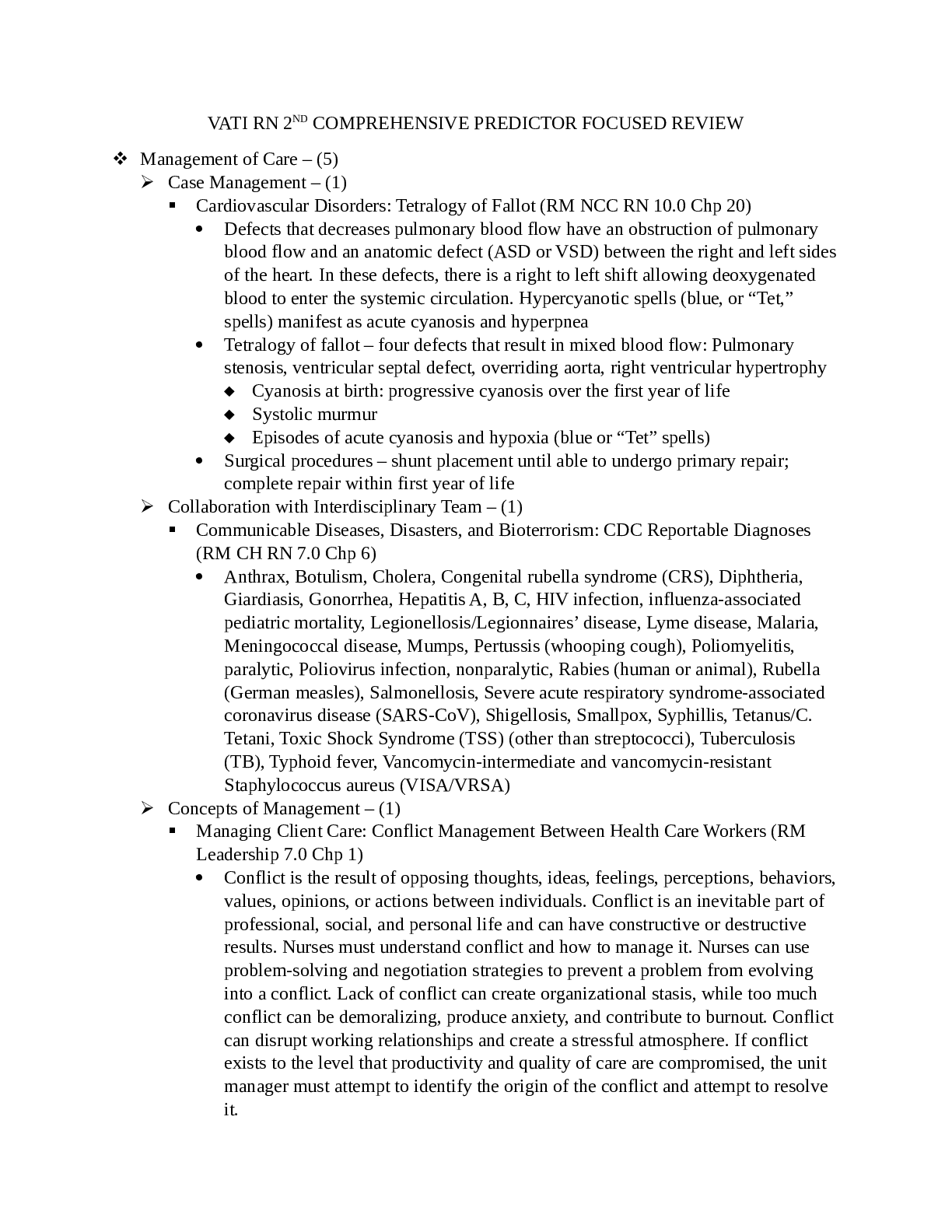
Reviews( 0 )
Document information
Connected school, study & course
About the document
Uploaded On
Apr 19, 2022
Number of pages
20
Written in
Additional information
This document has been written for:
Uploaded
Apr 19, 2022
Downloads
0
Views
62


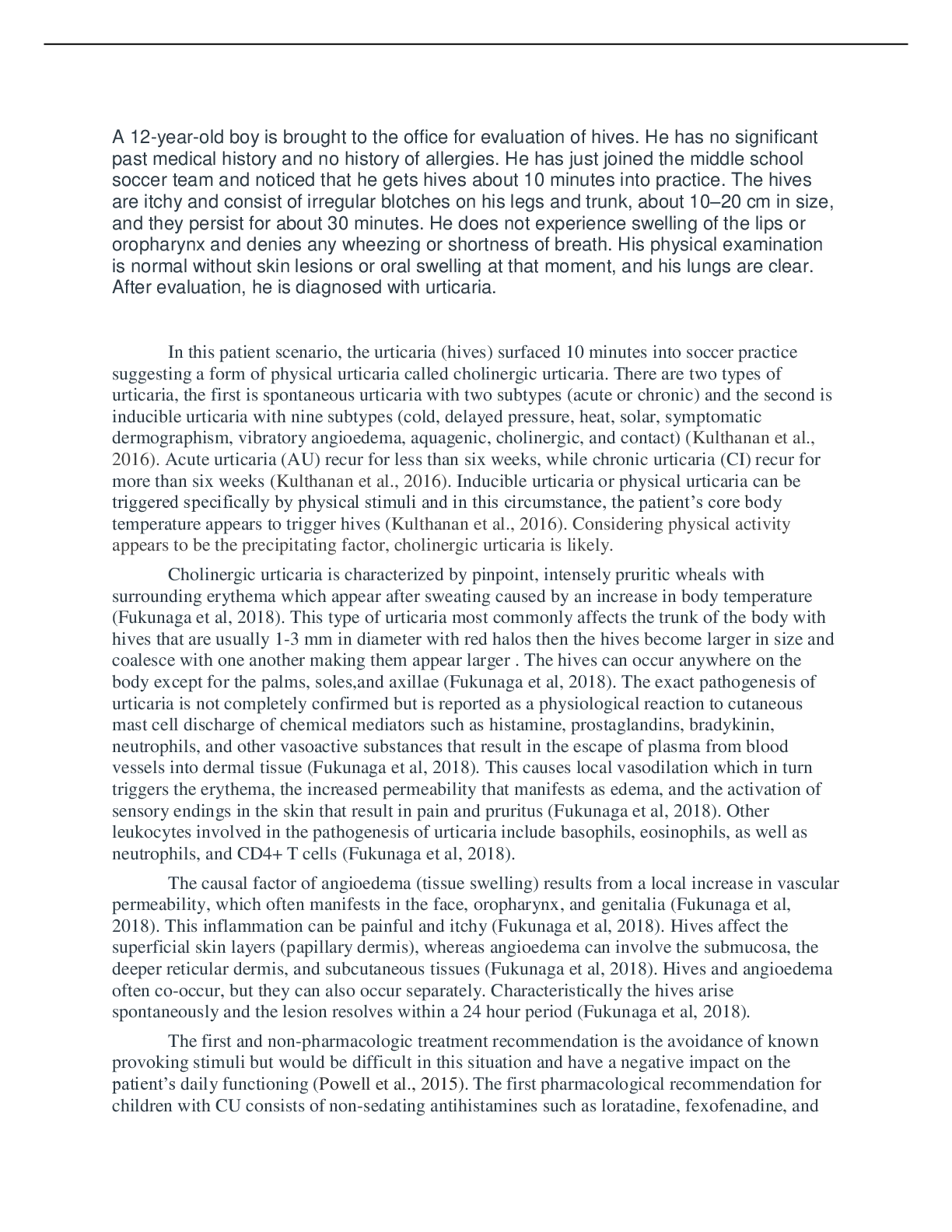

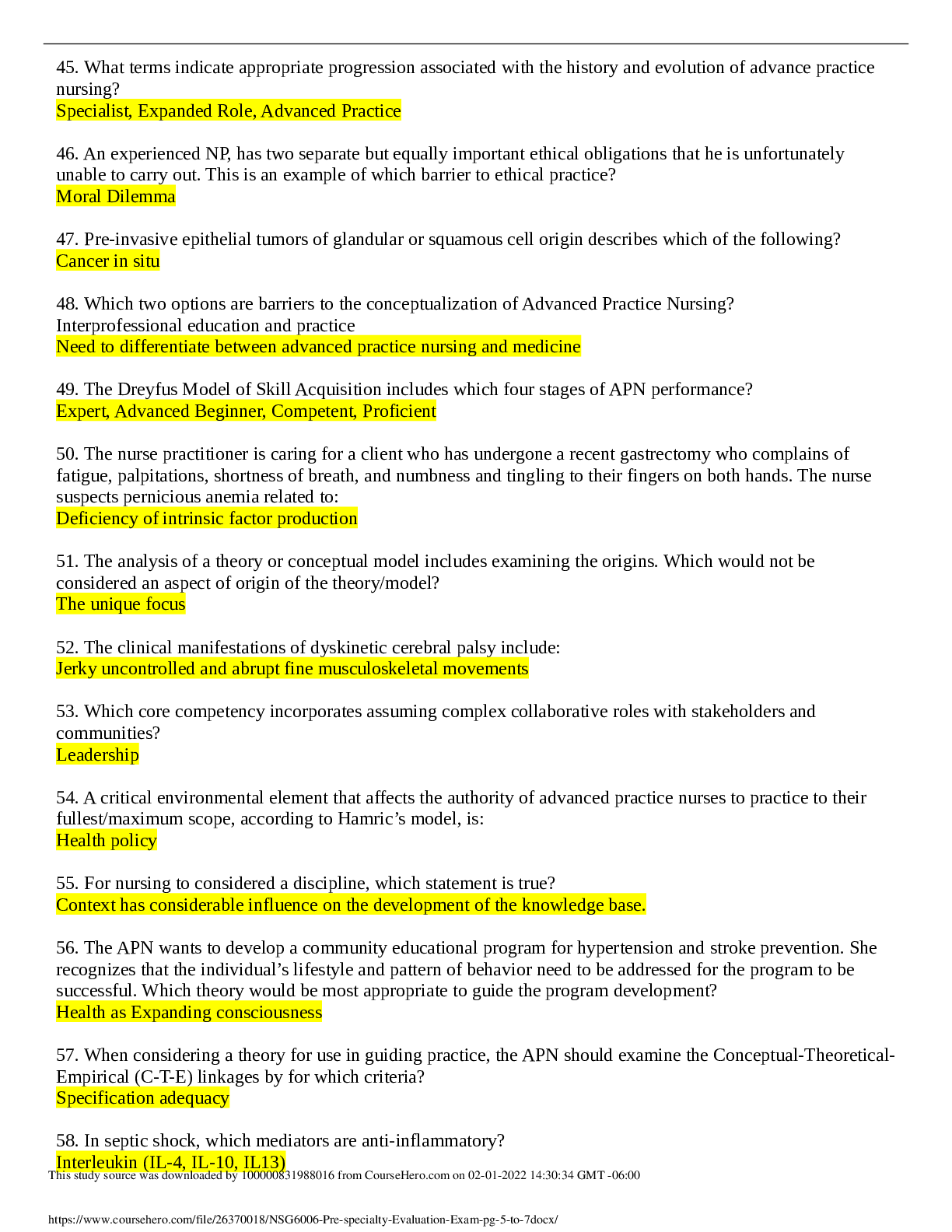




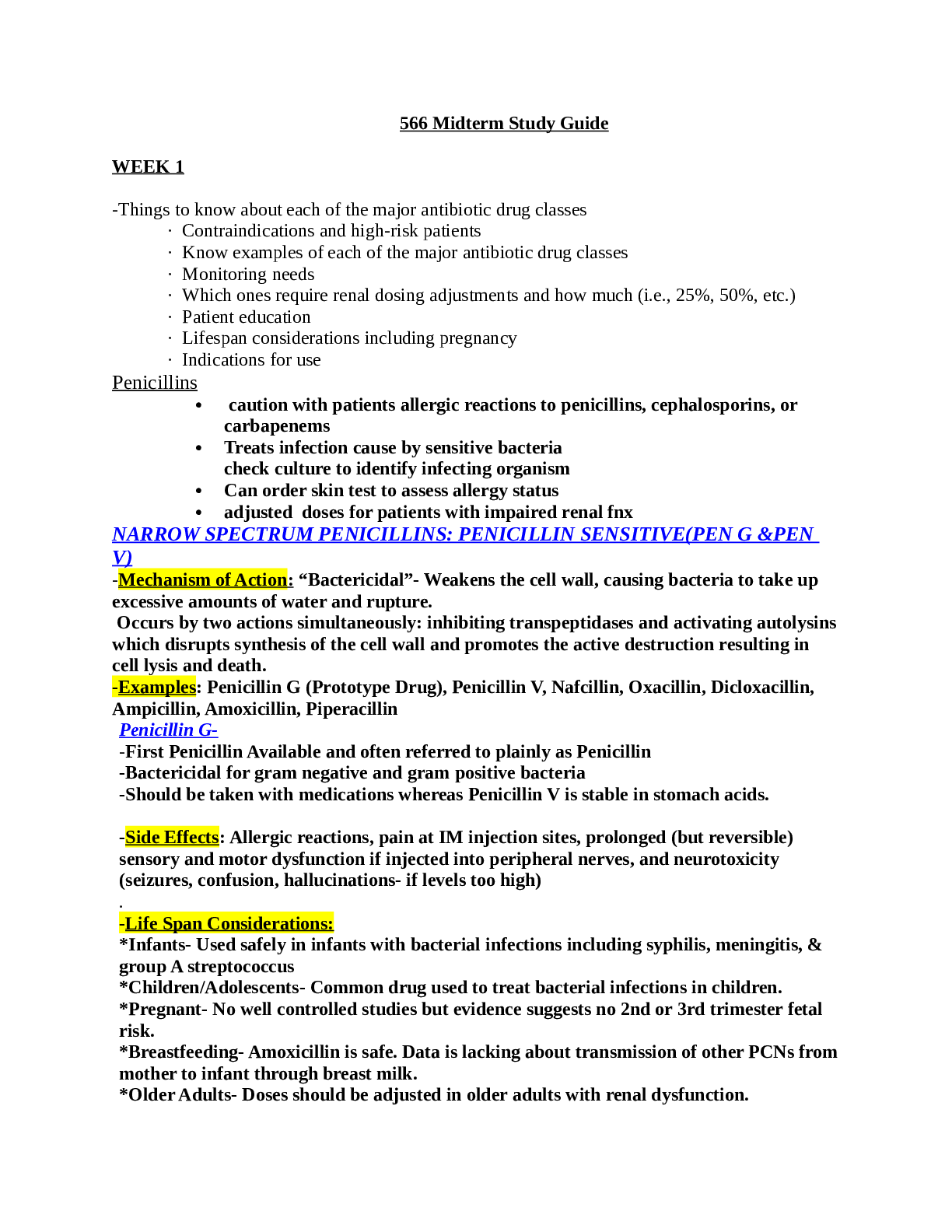
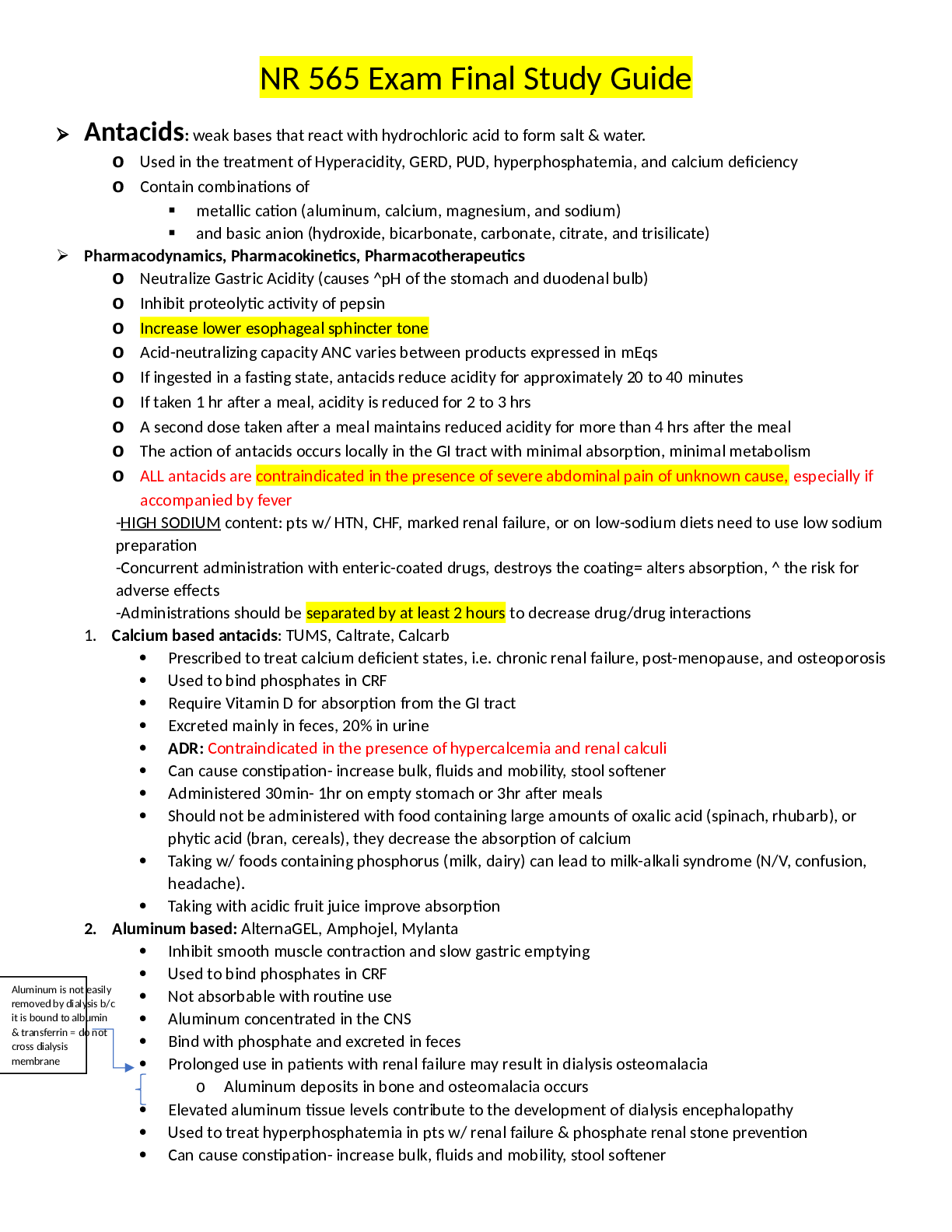


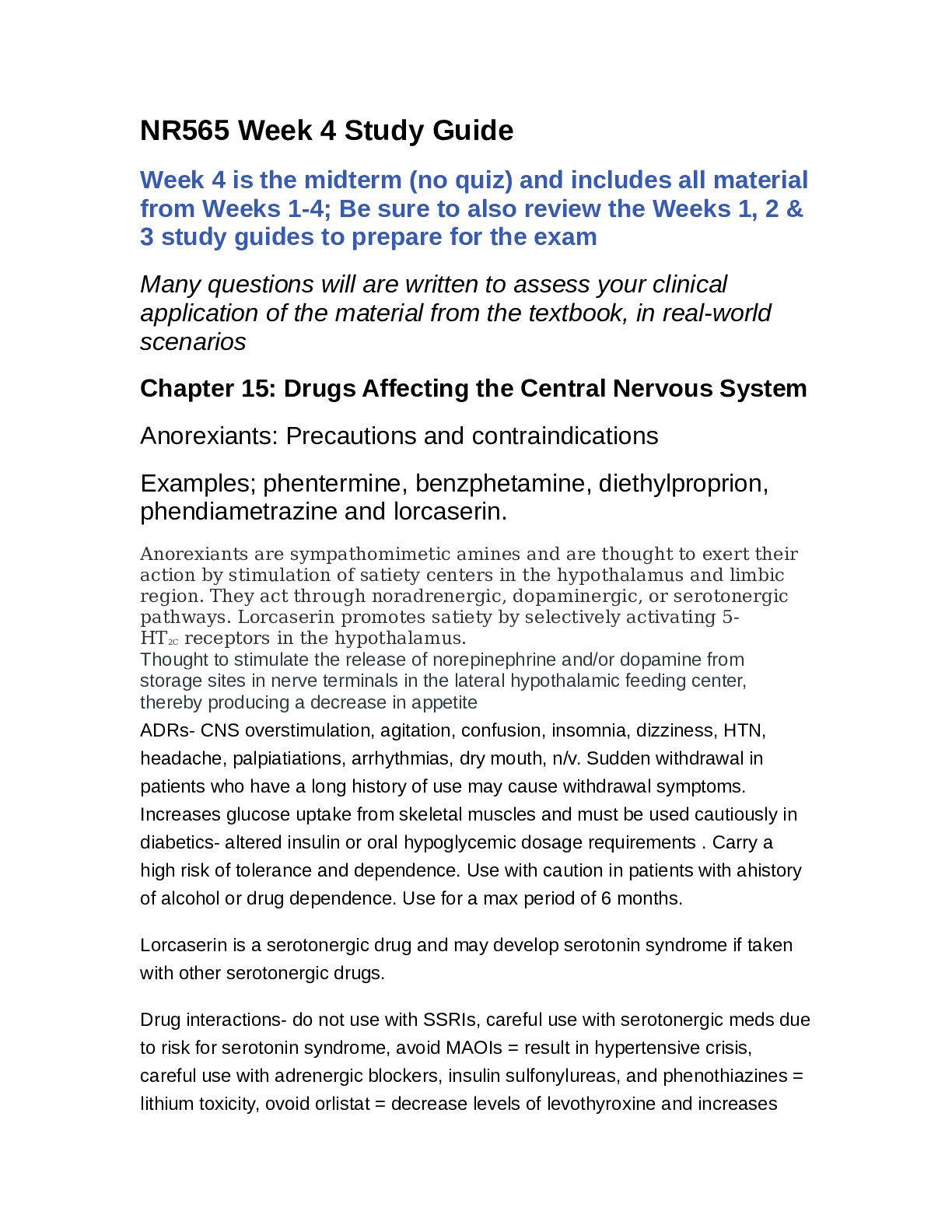


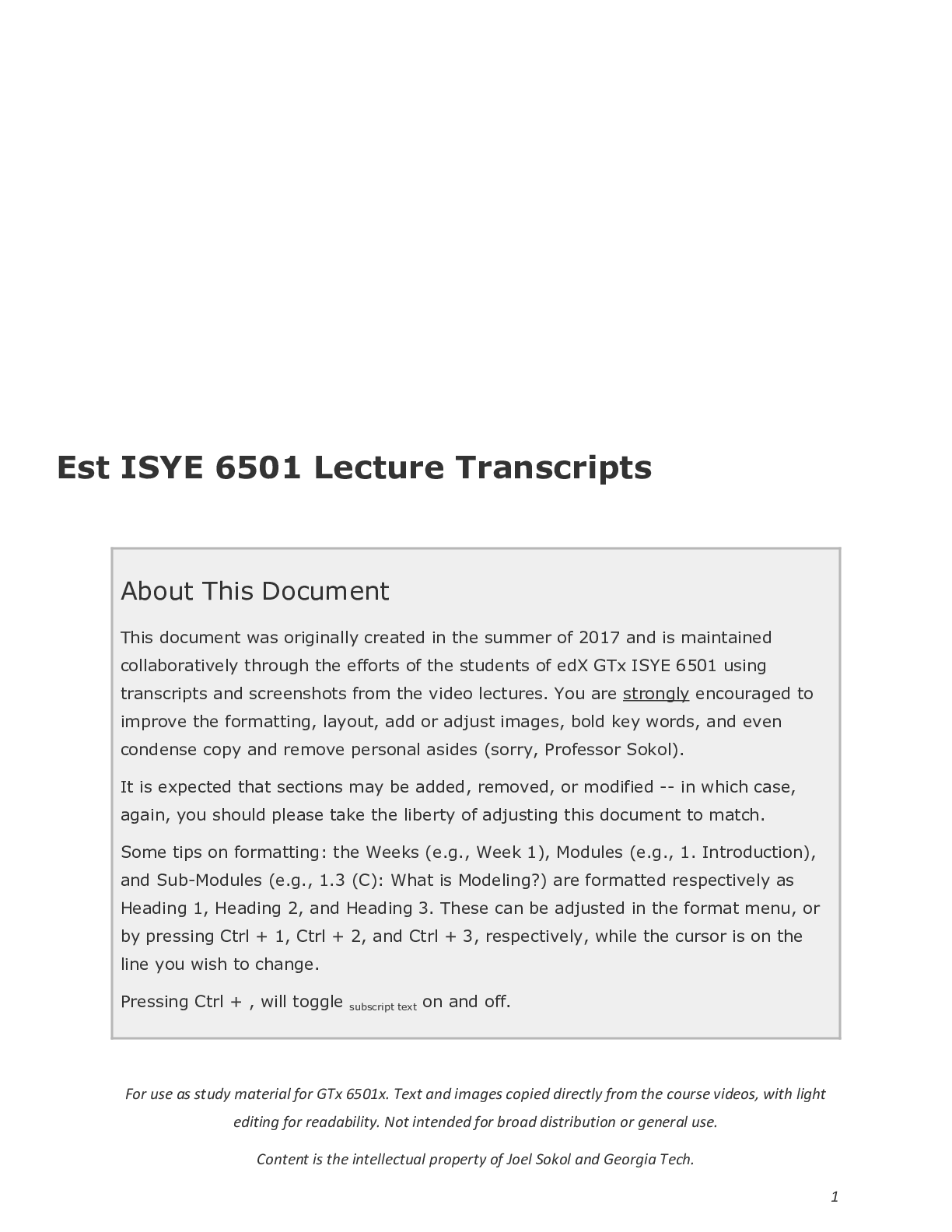

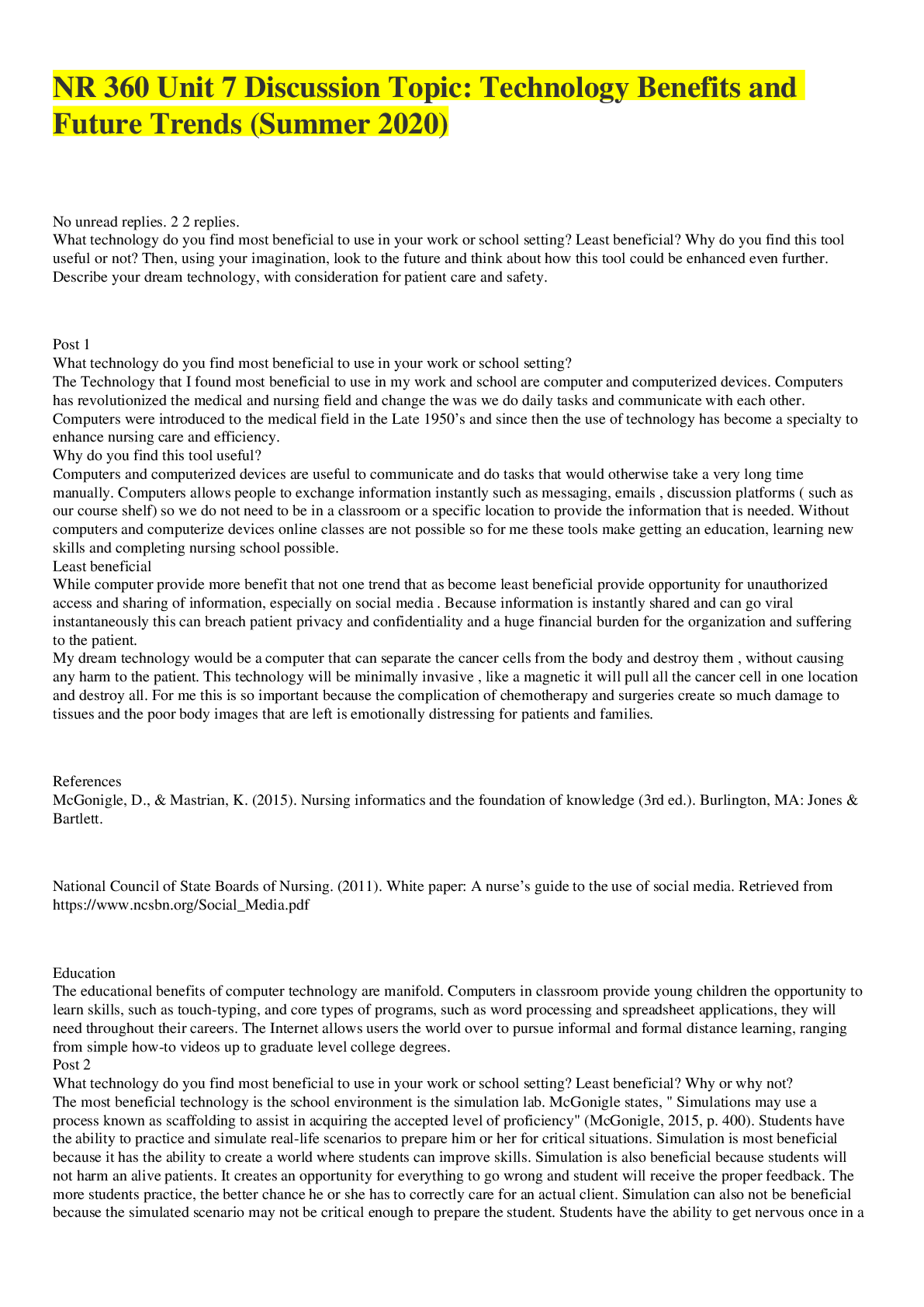
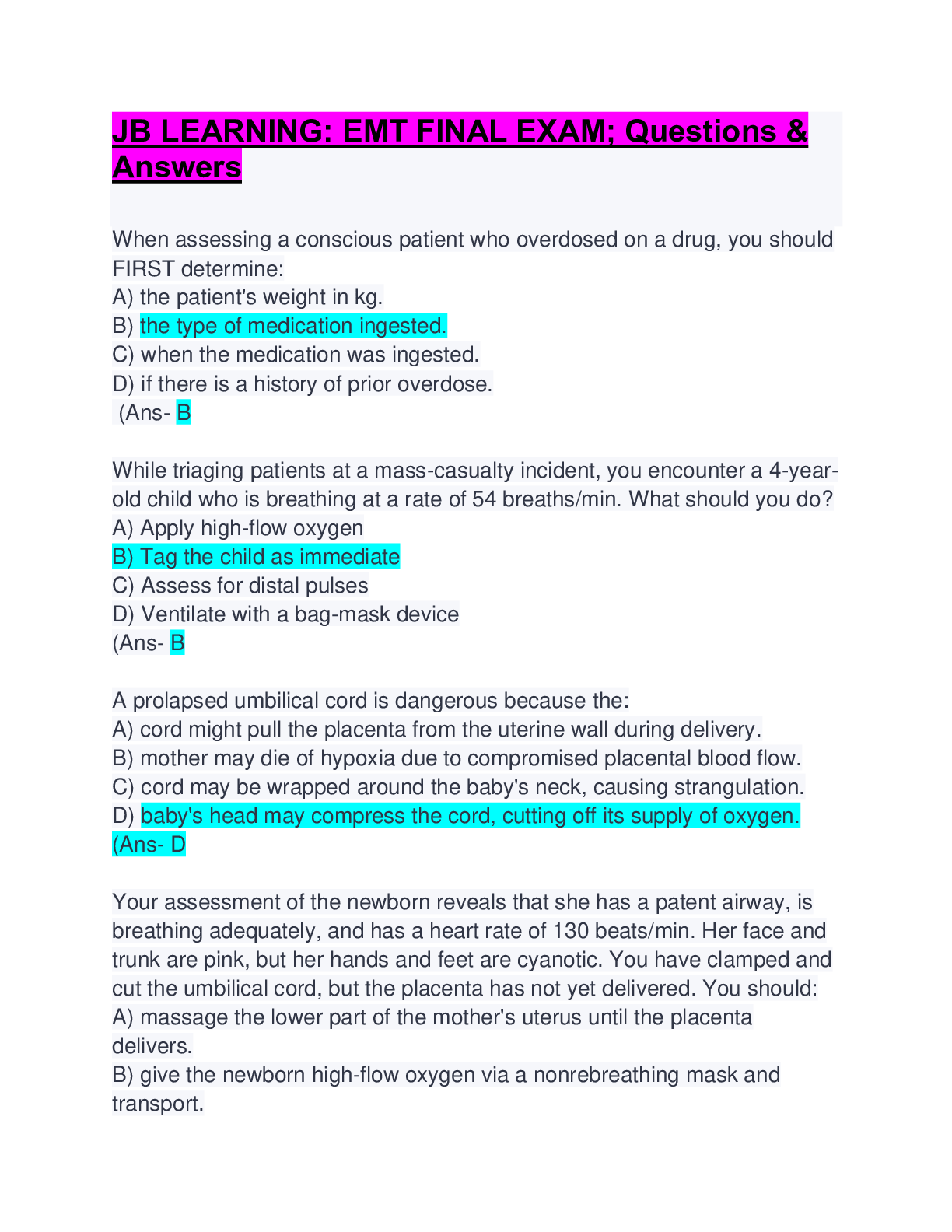
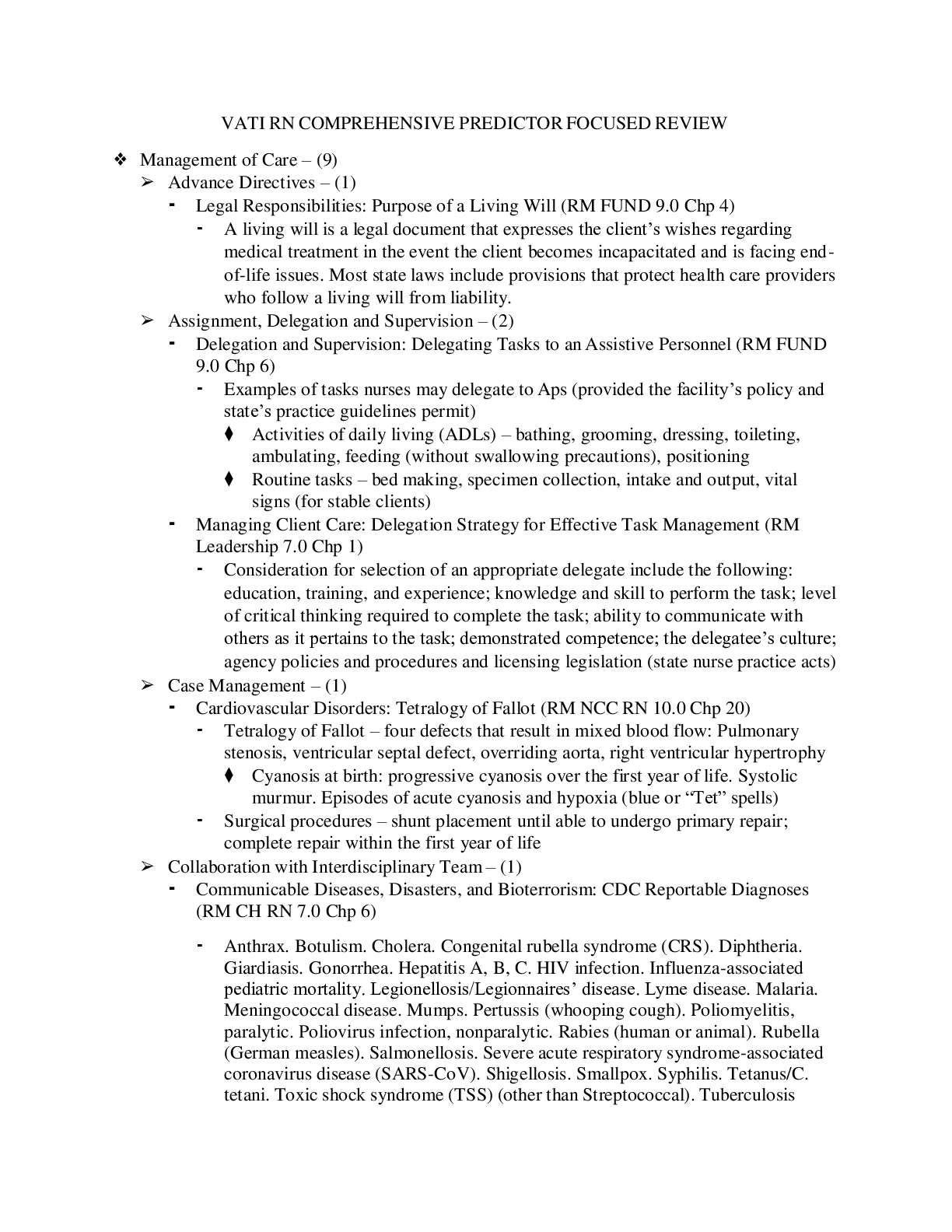

 2021.png)
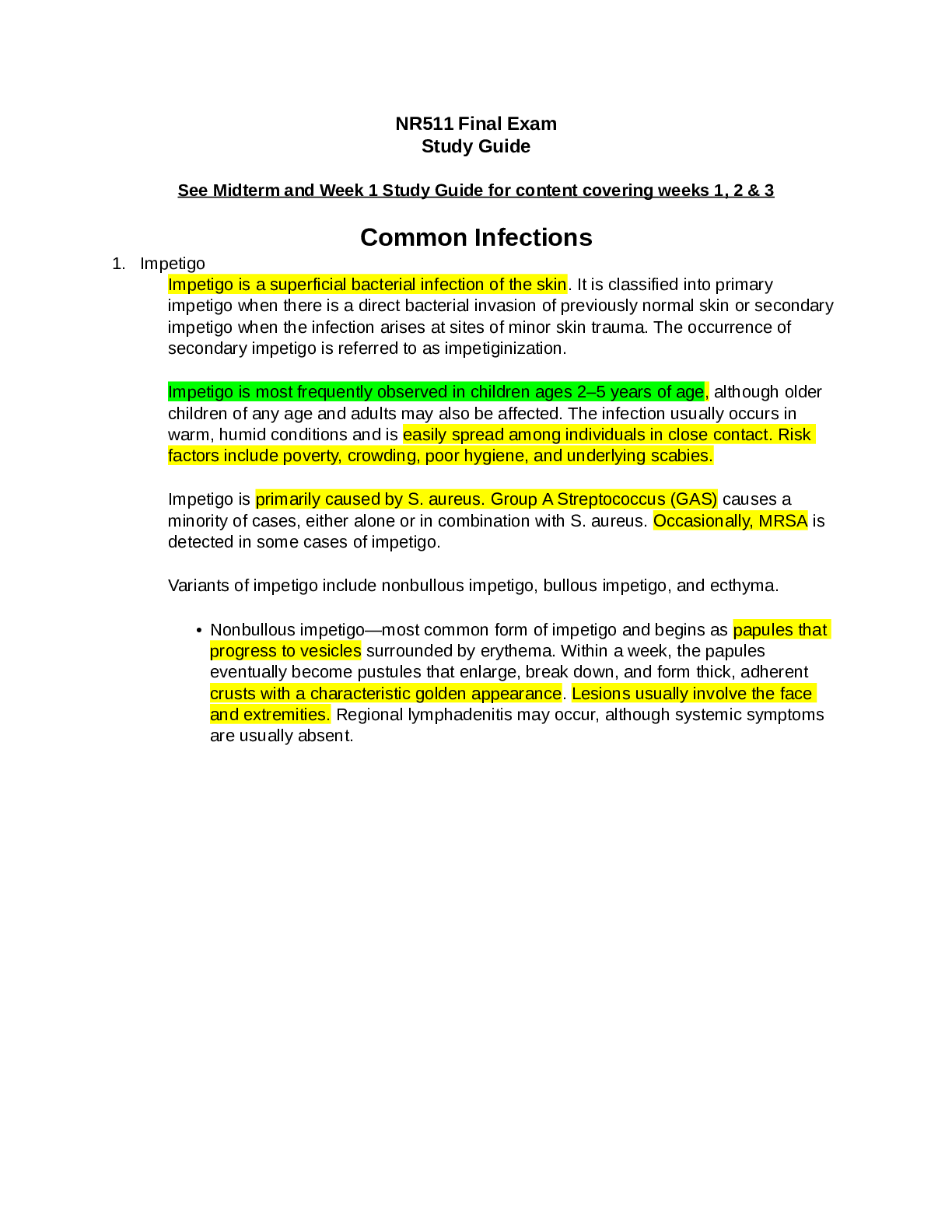
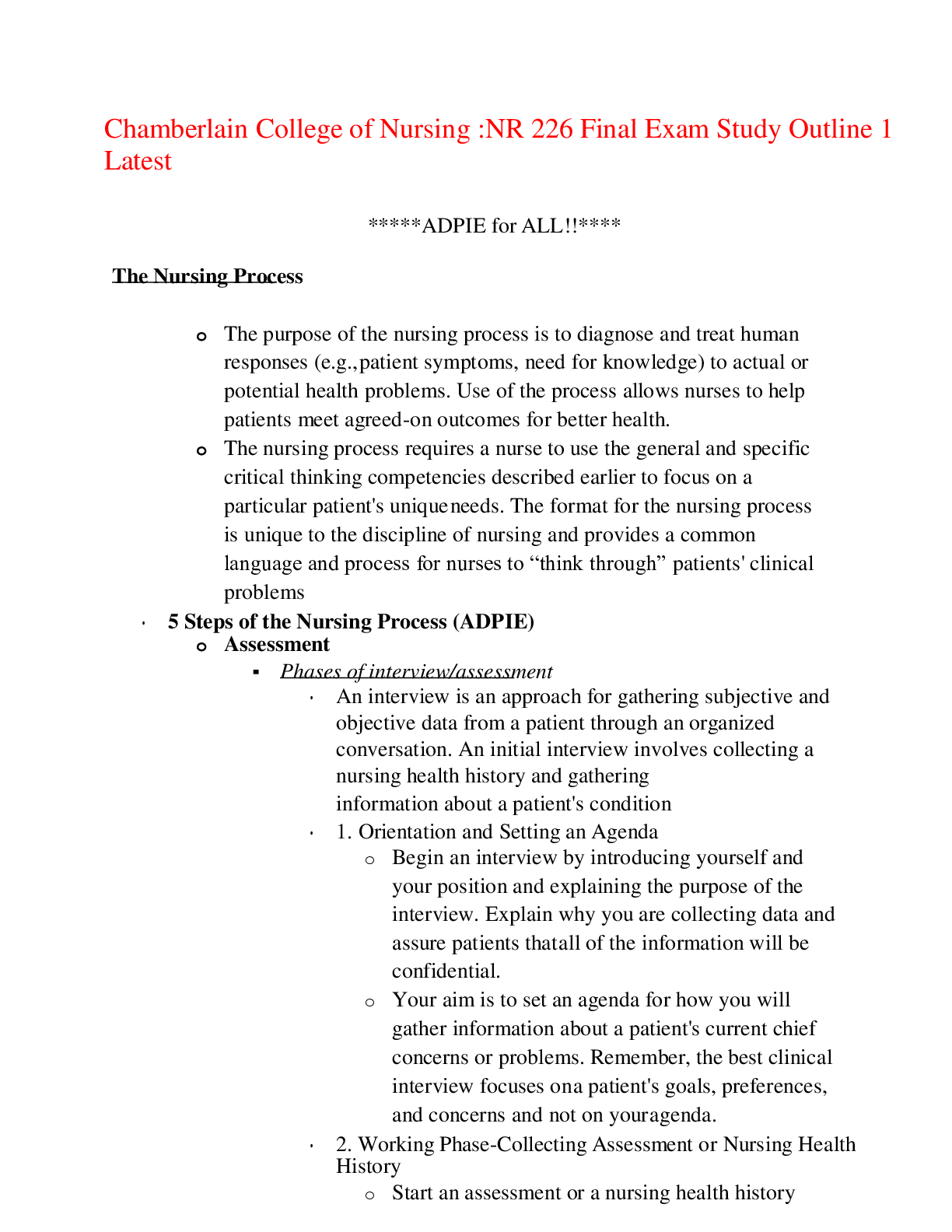
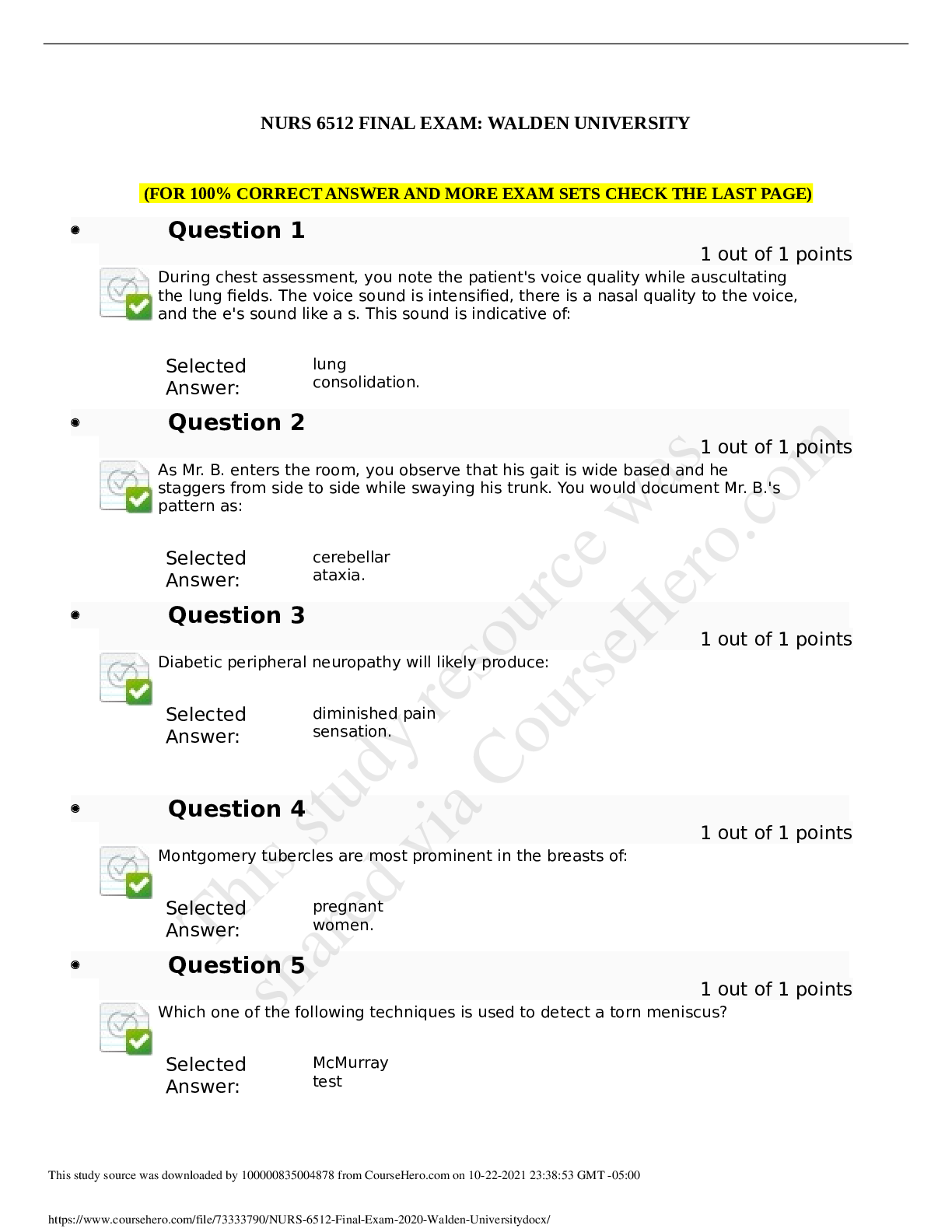
.png)
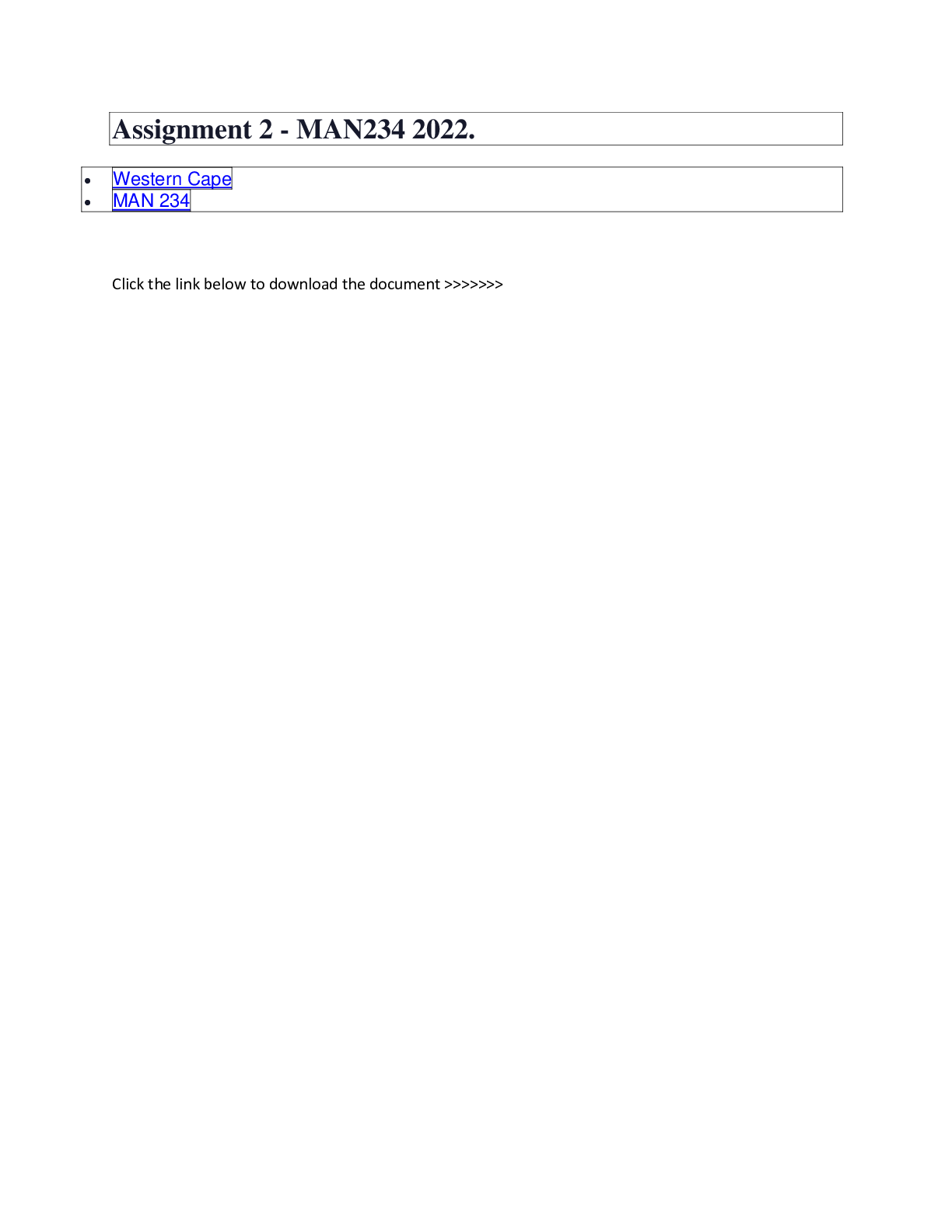
.png)



